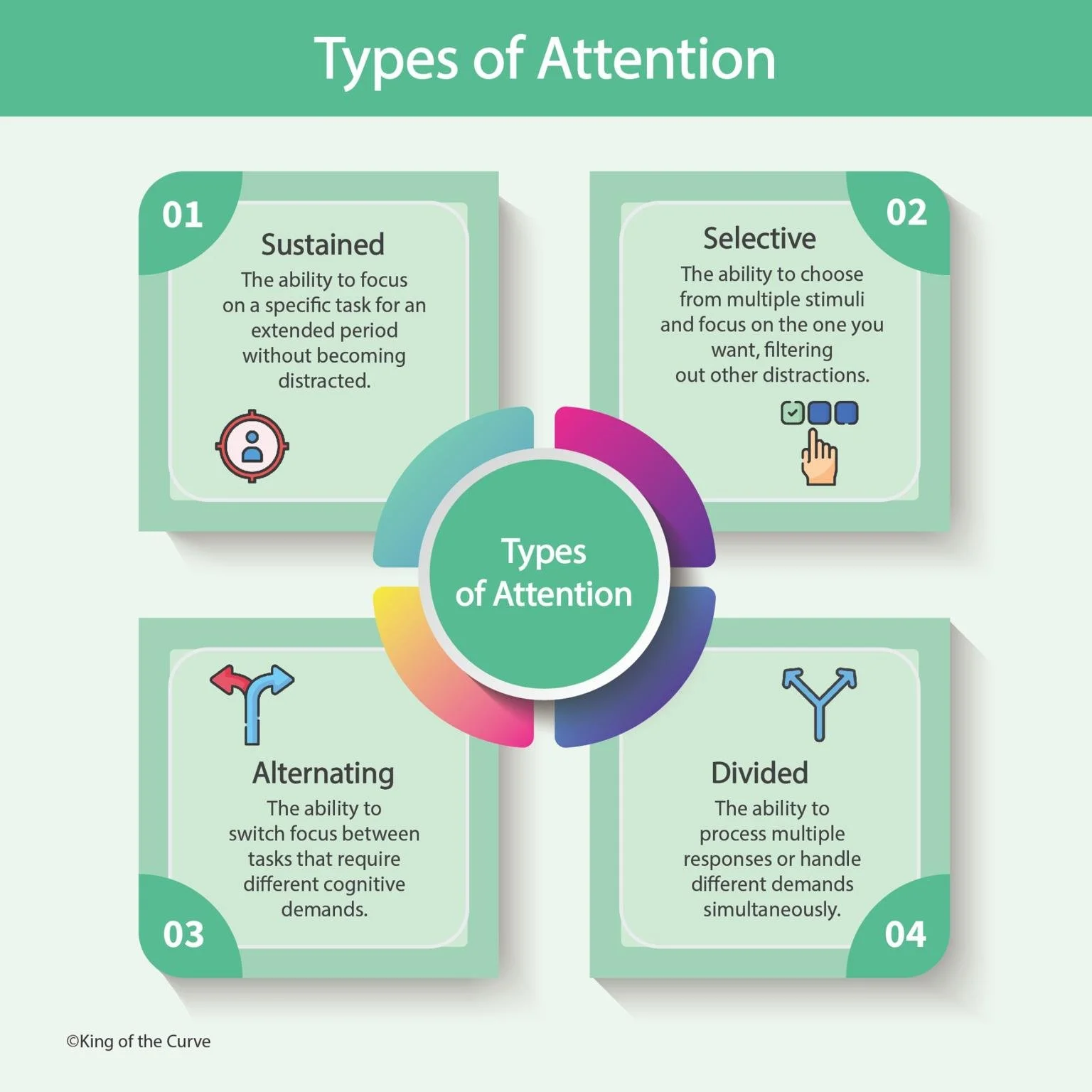🧠 Types of Attention: How the Brain Focuses
Attention is the gateway to effective cognition. Whether you're listening in class, solving a complex problem, or trying to multitask, your brain filters and prioritizes information using different forms of attention. Understanding these types helps both in academics and in high-stakes exams like the MCAT.
This blog breaks down:
The four types of attention
Real-life examples and strategic MCAT takeaways
A visual concept map for quick recall
🔍 What Is Attention?
Attention refers to the cognitive process of selectively concentrating on one aspect of the environment while ignoring others. It’s essential for perception, memory, and decision-making.
🧭 The Four Types of Attention
| Type | Definition | Example Scenario |
|---|---|---|
| Sustained | Focusing on a specific task for a prolonged time without distraction | Studying a passage for CARS without zoning out |
| Selective | Choosing one stimulus while filtering out irrelevant information | Focusing on a professor’s voice in a noisy lecture |
| Alternating | Shifting attention between tasks that require different mental sets | Switching from solving math problems to verbal reasoning |
| Divided | Processing multiple inputs or performing multiple tasks simultaneously | Taking notes while watching a video lecture |
🧠 MCAT Learning Tip
On the MCAT, Selective and Divided attention often appear in psychology/sociology passages, especially when examining multitasking, distraction, or sensory processing.
Alternating attention relates to executive functioning—a skill often tested in questions involving the prefrontal cortex.
Sustained attention deficits can be linked to ADHD or sleep deprivation scenarios.
🎓 MCAT-Style Example Question
A student is reading a dense biology passage while their roommates are playing video games in the background. Which type of attention is most likely being employed?
A. Sustained Attention
B. Divided Attention
C. Selective Attention ✅
D. Alternating Attention
Rationale: The student is filtering out external distractions and focusing on a single task, showing Selective Attention.
✅ Summary
Sustained: Long periods of focused attention
Selective: Focused attention while ignoring distractions
Alternating: Switching between different tasks
Divided: Managing multiple tasks at once
Understanding these types can help you manage test-day performance, daily study sessions, and real-world problem-solving.
🧰 KOTC Tools to Reinforce Attention Mastery
🎯 MCAT Psych/Soc Daily Quizzes
🔍 Visual Study Sheets on Sensation and Perception
📚 Behavioral Science Flashcard Deck
Frequently Asked Questions (FAQs)
-
Aim for 4-6 focused hours, ensuring you incorporate breaks to avoid burnout.
-
Practice mindfulness techniques, take practice exams under realistic conditions, and maintain a balanced lifestyle.
-
Set short-term goals, seek support from mentors, and reward yourself for small achievements.
-
Regular exercise improves focus, reduces stress, and enhances overall mental clarity.
-
KOTC offers personalized learning tools, gamification features, and adaptive question banks to help students stay on track without burnout.


